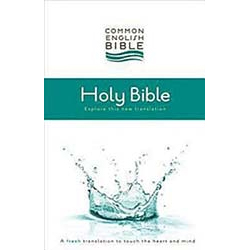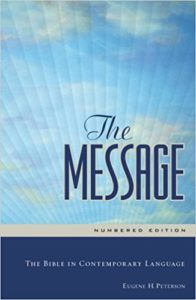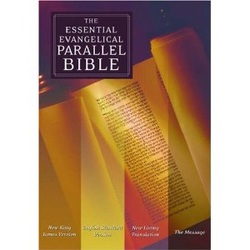There are two types of Bible translations:
- “Formal equivalence” — a word-for-word rendering of the original language into whatever language the reader needs, i.e., English. Every effort is made to retain both the word order and sentence structure of the original Hebrew or Greek.
- “Functional equivalence” — more of a “thought for thought” rendering of the original text. Also referred to as “dynamic equivalence.” The goal here is to produce in the reader’s language (i.e., English) the closest equivalent in both meaning and style of the original Hebrew and Greek (and Aramaic).
Here are three examples of Bible translations:
KJV: So David slept with his fathers, and was buried in the city of David.
NIV: Then David rested with his fathers and was buried in the City of David.
NLT: Then David died and was buried in the City of David.
As in many other specific verses, the NLT (functional equivalence) more accurately conveys the meaning in English than does either the KJV or the NIV (both of them formal equivalence).
The point is to find a contemporary translation that you find speaks to you and touches your heart and thought in a way that awakens them to the spiritual meaning within.
Some of the more popular Bible translations used by various denominations:
THE COMMON ENGLISH BIBLE
Publisher: Common English Bible (October 1, 2010)
It is one of the newest translations on the market, whose tag line is: ‘a fresh translation to touch the heart and mind’. 115 biblical scholars from 22 faith traditions worked as translators to create a Bible both by and for the Church. It can purchased through Amazon, in either a full Bible translation, or just New Testament.
THE MESSAGE
Publisher: NavPress, 2005. Hardcover
Why was The Message written? The best answer to that question comes from Eugene Peterson himself: “While I was teaching a class on Galatians, I began to realize that the adults in my class weren’t feeling the vitality and directness that I sensed as I read and studied the New Testament in its original Greek. Writing straight from the original text, I began to attempt to bring into English the rhythms and idioms of the original language. I knew that the early readers of the New Testament were captured and engaged by these writings and I wanted my congregation to be impacted in the same way. I hoped to bring the New Testament to life for two different types of people: those who hadn’t read the Bible because it seemed too distant and irrelevant and those who had read the Bible so much that it had become ‘old hat.'”
Peterson’s parishioners simply weren’t connecting with the real meaning of the words and the relevance of the New Testament for their own lives. So he began to bring into English the rhythms and idioms of the original ancient Greek—writing straight out of the Greek text without looking at other English translations. As he shared his version of Galatians with them, they quit stirring their coffee and started catching Paul’s passion and excitement as he wrote to a group of Christians whom he was guiding in the ways of Jesus Christ. For more than two years, Peterson devoted all his efforts to The Message New Testament. His primary goal was to capture the tone of the text and the original conversational feel of the Greek, in contemporary English.
Language changes. New words are formed. Old words take on new meaning. There is a need in every generation to keep the language of the gospel message current, fresh, and understandable—the way it was for its very first readers. That is what The Message seeks to accomplish for contemporary readers. It is a version for our time—designed to be read by contemporary people in the same way as the original koine Greek and Hebrew manuscripts were savored by people thousands of years ago. (Description from Tecarta Bible.)
NEW LIVING TRANSLATION (NLT)
Publisher: Tyndale, 2014, hardcover.
The goal of any Bible translation is to convey the meaning of the ancient Hebrew and Greek texts as accurately as possible to the modern reader. The New Living Translation is based on the most recent scholarship in the theory of translation. The challenge for the translators was to create a text that would make the same impact in the life of modern readers that the original text had for the original readers. In the New Living Translation, this is accomplished by translating entire thoughts (rather than just words) into natural, everyday English. The end result is a translation that is easy to read and understand and that accurately communicates the meaning of the original text. Make Your Study Personal and Your Devotions Serious.
The NLT Study Bible gives you the tools you need to enter the world of the Bible, including over 25,000 study notes plus profiles, charts, maps, timelines, book and section introductions, and approximately 300 theme notes. This new large print edition features a generous 10-point font.
(Note from Madelon: This is called large print, but it is more of a normal print size compared to other Bibles. The regular edition is quite small, so I would recommend this one. It is one of my most favorite translations!)
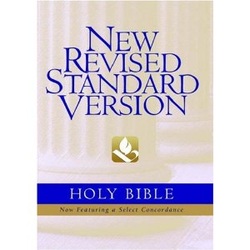
NEW REVISED STANDARD VERSION (NRSV)
The New Revised Standard Version Bible by Oxford University Press (Nov 29, 1990), the ‘grandson’ of the King James Version, following the Revised Standard Version. Preferred translation in most mainline churches and Christian seminaries and from pulpits today.
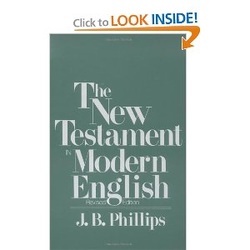
THE NEW TESTAMENT IN MODERN ENGLISH
New Testament in Modern English
by J. B. Phillips (Jan 1, 1996)
An older paraphrase but closer to a translation that is still a favorite of many.
THE ESSENTIAL EVANGELICAL PARALLEL BIBLE
The Essential Evangelical Parallel Bible: New King James Version · English Standard Version · New Living Translation · The Message (Bonded Leather, Black) by John R., III Kohlenberger (Dec 31, 2004) Published by Oxford University Press in 2004, it contains four columns per page spread with four simultaneous translations from: the New King James Version, the English Standard Version, the New Living Translation, and The Message. Excellent for use in easily comparing a single passage for differences in word choice, emphasis, nuance.

